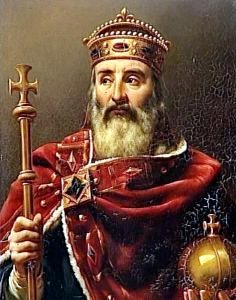
Battle of Adramyttium(Adramyttion) |
year: 120519 March 1205 |
| A victory of the Latins against the Byzantines of Nicaea | ★ ★ ★ ★ ★ |
|
enemy: Latin Crusaders
|
location: Adramyttium, modern Edremit in northwestern Asia Minor
|
accuracy:
●●●●●
|
|
battle type: Pitched Battle |
war: Fourth Crusade |
modern country:
Turkey |
| ▼ The Byzantines(emperor: Theodore I Laskaris) | ▼ The Enemies | |
| Commander: | Constantine Laskaris or Theodoros Mangaphas | Henry of Flanders |
| Forces: | Unknown | Unknown (certainly outnumbered) |
| Losses: | heavy |
| Background story: |
| In 1204, Constantinople was taken by the Crusaders of the Fourth Crusade. This led to the collapse of the Byzantine Empire and the establishment of the Latin Empire. Baldwin of Flanders was crowned emperor in Hagia Sophia in May 1204.
The Greek resistance continued in many areas, not coordinated and not always successful. The Crusaders had particular difficulty in advancing to Asia Minor where they had to face the tough Akrites, the various semi-independent local rulers and, most importantly, the state founded by Theodore Laskaris in Nicaea, which would become the main rival of the Latins. Meanwhile, the forces of the Franks were growing by all sorts of adventurers. Many of them came from the old crusader states in Cilicia and Syria and were familiar with the terrain. They were mainly Franks, but also Turkopols, Armenians, etc. These “Armenians” advised Henry of Flanders (brother of Baldwin and, later, Latin emperor) to occupy the city of Adramyttion (modern-day Edremit), which would be a first step in the conquest of Asia Minor. Henry adopted the idea and starting from Abydos moved with a small force of knights to Adramyttion. The city soon surrendered. Theodoros Laskaris, estimating that the presence of the Franks there would be a serious threat, organized a relatively large army to counterattack. He assigned the command to his brother, Constantine Laskaris, who, incidentally, had been elected Byzantine emperor after the Latins had entered Constantinople in 1204, but had never been crowned or recognized as emperor, nor did he seem to have the ambition to be an emperor. However, according to the historian Choniatis, the leader of the Byzantine army was another man: Theodoros Mangaphas also known as “Moreothodoros” (= crazy Theodoros), who in 1189, had become independent from Byzantium and had been proclaimed King of Philadelphia. He was later arrested, but was released in 1204 and became ruler of Philadelphia again. The case of Mangaphas being the leader of the campaign is more realistic, because he was probably one of the few local rulers who at that time could organize a considerable army. We should also keep in mind that the information that Constantine Lascaris was the leader is recorded by a Frankish historian (Geoffrey Villehardouin) who may have preferred to record that (the future emperor) Henry defeated an emperor (though not unofficial) instead of the crazy Theodoros. (This is a completely hypothetical remark.) |
The Battle: |
 Henry of Flanders The two opponents engaged in a close-knit, hand-to-hand battle. The Franks applied a simple tactic that always had an effect on the Byzantines at that time: the iron-clad knights rushed with their horses and with their lances in the middle of the Byzantine formation, who could not face them and had to retreat. The same thing happened that day: although the Franks were outnumbered, the Byzantine ranks were scattered and began a disorderly retreat with heavy losses. The Franks captured a large amount of weaponry and treasure Konstantinos Laskaris was probably killed in the battle, as his name is not mentioned again. |
Noteworthy: |
| As mentioned above, the leader of the Byzantines was either Constantine Laskaris or Theodoros Mangaphas. We do not know for sure. Perhaps both of them participated in the campaign or maybe there were two consecutive attacks (and defeats) of the Byzantines in Adramyttion. The most probable scenario is that Magkafas led the Byzantines in the battle of Adramyttion. |
Aftermath: |
| It was the first major battle, after the fall of Constantinople, between the Latins and the Byzantines. The victory of the Franks had no major effects because they had serious problems in other fronts and they did not continue their efforts. Theodoros Laskaris proclaimed himself Byzantine emperor in Nicaea. This happened probably shortly after the battle and is probably related to the loss of his brother. Henry became Latin emperor a month later (1205-1216) succeeding his brother. |
|
|
